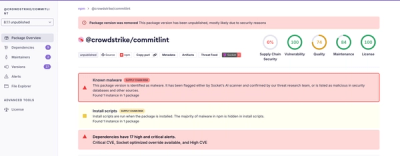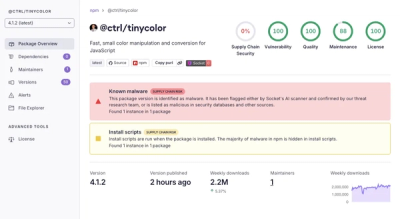A client for the Overpass API, a read-only API that serves up custom selected
parts of OpenStreetMap data.
The Overpass API is optimized for data consumers that need a few elements within
a glimpse or up to roughly 10 million elements in some minutes, both selected by
search criteria like location, type of objects, tag properties, proximity, or
combinations of them. To make use of it, you should familiarize yourself with
Overpass QL, the query language used to select the elements that you want.
Contents
See also
Features
- Asynchronous requests using aiohttp
- Parallel queries within rate limits
- Fault tolerance through a (customizable) retry strategy
- Extras
- Typed elements that simplify browsing result sets
- Shapely geometries for manipulation and analysis
- GeoJSON exports
- Simplified querying and processing of public transportation routes
Design Goals
- A small and stable set of core functionality.
- Good defaults for queries and retrying.
- Sensible and spec-compliant GeoJSON exports for all objects that represent spatial features.
- Detailed documentation that supplements learning about OSM and the Overpass API.
- Room for extensions that simplify querying and/or processing of spatial data
in specific problem domains.
Usage
There are three basic steps to fetch the spatial data you need:
-
Formulate a query
- Either write your own custom query, f.e.
Query("node(5369192667); out;"),
- or use one of the
Query subclasses, f.e. SingleRouteQuery(relation_id=1643324).
-
Call the Overpass API
- Prepare your client with
client = Client(user_agent=...).
- Use
await client.run_query(query) to fetch the result set.
-
Collect results
- Either access the raw result dictionaries with
query.result_set,
- or use a collector, f.e.
collect_elements(query) to get a list of typed Elements.
- Collectors are often specific to queries -
collect_routes requires a RouteQuery,
for instance.
Example: looking up a building in Hamburg
a) Results as Dictionaries
You may use the .result_set property to get a list of all query results
without any extra processing:
from aio_overpass import Client, Query
query = Query('way["addr:housename"=Elbphilharmonie]; out geom;')
client = Client()
await client.run_query(query)
query.result_set
[
{
"type": "way",
"id": 24981342,
"tags": {
"addr:city": "Hamburg",
"addr:country": "DE",
"addr:housename": "Elbphilharmonie",
},
}
]
b) Results as Objects
This will give you a user-friendly Python interface
for nodes,
ways,
and relations.
Here we use the .tags property:
from aio_overpass.element import collect_elements
elems = collect_elements(query)
elems[0].tags
{
"addr:city": "Hamburg",
"addr:country": "DE",
"addr:housename": "Elbphilharmonie",
}
c) Results as GeoJSON
The processed elements can also easily be converted to GeoJSON:
import json
json.dumps(elems[0].geojson, indent=4)
{
"type": "Feature",
"geometry": {
"type": "Polygon",
"coordinates": [
[
[
9.9832434,
53.5415472
],
...
]
]
},
"properties": {
"id": 24981342,
"type": "way",
"tags": {
"addr:city": "Hamburg",
"addr:country": "DE",
"addr:housename": "Elbphilharmonie",
...
},
...
},
"bbox": [
9.9832434,
53.540877,
9.9849674
53.5416212,
]
}
This library can be installed with a number of optional extras.
-
Install no extras, if you're fine with dict result sets.
-
Install the shapely extra, if you would like the convenience of typed OSM elements.
It is also useful if you are interested in elements' geometries,
and either already use Shapely, or want a simple way to export GeoJSON.
- This includes the
pt module to make it easier to interact with public transportation routes.
Something seemingly trivial like listing the stops of a route can have unexpected pitfalls,
since stops can have multiple route members, and may have a range of different tags and roles.
This submodule will clean up the relation data for you.
-
Install the networkx extra to enable the pt_ordered module, if you want a route's path as a
simple line from A to B. It is hard to do this consistently, mainly because ways are not always
ordered, and stop positions might be missing. You can benefit from this submodule if you wish to
- render a route's path between any two stops
- measure the route's travelled distance between any two stops
- validate the order of ways in the relation
- check if the route relation has gaps
-
Install the joblib extra to speed up pt_ordered.collect_ordered_routes(), which can benefit
greatly from parallelization.



